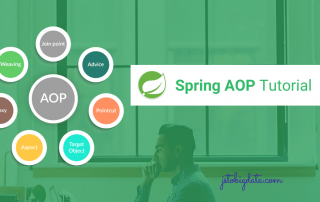After returning advice in Spring AOP – @AfterReturning
1. Introduction: After returning advice gets invoked after a matched method finishes its execution and returns a value. You already know, the name for such a matched method is Joinpoint. You can declare an After returning advice using the @AfterReturning annotation. You already know about the 5 types of advice from the previous article as listed below. Before advice – @Before [...]
